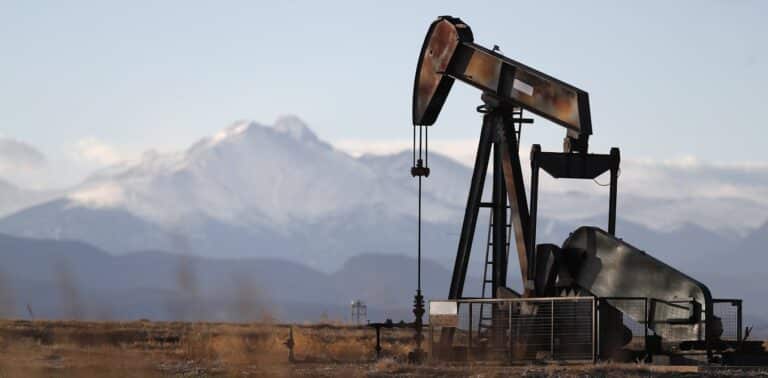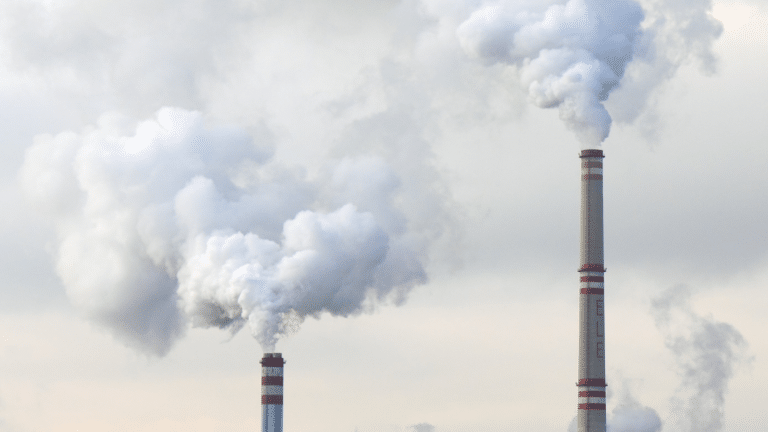China Halts U.S. LNG Imports Amid Tariff War
China has ceased importing liquefied natural gas from the United States since early February, as the ongoing tariff war impacts energy trade.
Current Access Level “I” – ID Only: CUID holders, alumni, and approved guests only
Insights from the Center on Global Energy Policy
This Energy Explained post represents the research and views of the author. It does not necessarily represent the views of the Center on Global Energy Policy. The piece may be subject to further revision. Contributions to SIPA for the benefit of CGEP are general use gifts, which gives the Center discretion in how it allocates these funds. Rare cases of sponsored projects are clearly indicated.
For a full list of financial supporters of the Center on Global Energy Policy at Columbia University SIPA, please visit our website at Our Partners. See below a list of members that are currently in CGEP’s Visionary Circle. This list is updated periodically.
Earlier this month, China convened its “two sessions”—the annual concurrent meetings of the National People’s Congress (NPC), China’s legislature, and the Chinese People’s Political Consultative Congress, a political advisor body. The Government Work Report, the National Development and Reform Commission’s report on national economic and social development (NDRC report),[1] and other materials presented at these meetings depict an oil and natural gas industry that is expected to enhance China’s energy supply security while navigating China’s transition to a lower-carbon future. Five key takeaways from the two sessions follow.
Domestic exploration and production are still going strong. The NDRC report calls on China’s national oil companies (NOCs) to complete China’s first ever seven-year action plan for accelerating the exploration and production of oil and natural gas. The action plan grew out of a meeting between China’s NOCs and the National Energy Administration in 2019 in response to concerns about the decline in China’s oil output from a record 4.3 million barrels per day (bpd) in 2015 to 3.8 million bpd in 2018 and China’s dependence on imported oil increasing from more than 60 percent to more than 70 percent over the same period. China’s oil output subsequently increased back to 4.3 million bpd in 2024. Meanwhile, natural gas production grew from 161 billion cubic meters (bcm) in 2018 to 246 bcm in 2024.
More infrastructure is being developed to boost natural gas supply security. Enhancing the security of China’s natural gas supply entails more than increasing domestic production. It also involves building more infrastructure, especially storage and gas-fired peak-shaving plants to help China manage weak consumption during the summer and surging demand in winter. A researcher at PetroChina has described the two types of infrastructure as major weak links in China’s energy security. Severe natural gas shortages during the winter of 2017–2018, which literally left some communities out in the cold, exposed the insufficiency of China’s natural gas storage capacity. In a 2018 circularcalling for an acceleration in the construction of storage capacity, NDRC noted that China’s underground natural gas storage was equivalent to 3 percent of its consumption, below the global average of 12–15 percent. China has made progress since then; in 2024, its 26.7 bcm of storage covered 6.3 percent of its apparent consumption of 426 bcm. However, the country is likely to miss its target of 55–60 bcm of integrated storage capacity by 2025 due to a range of factors including high construction and operational costs.
Increased support for “cash-for-clunkers” will probably take a bite out of oil demand. Premier Li Qiang announced that Beijing will double the ultra-long-term special treasury bonds (those with terms greater than 10 years) issued to support consumer goods trade-in programs, from 150 billion yuan in 2024 to 300 billion yuan ($41.3 billion) in 2025. The trade-in programs provide consumers with subsidies that cover 15–20 percent of the purchase price of a variety of products, including new energy vehicles (NEVs) (a category that includes battery-electric vehicles, plug-in hybrids, and fuel-cell electric vehicles) and more fuel-efficient internal combustion engine vehicles, with more generous subsidies available for NEVs. More than 60 percent of consumers who participated in the 2024 vehicle trade-in program purchased NEVs.
NEV sales have been undercutting China’s demand for gasoline. According to China National Petroleum Corporation’s Economics and Technology Research Institute (ETRI), in 2024, NEVs displaced 28 million tons of gasoline in China, contributing to an estimated 3.1 percent decrease in gasoline consumption. The research institute expects that NEVs will displace an additional 10 million tons of China’s gasoline demand in 2025.
Refineries are shifting production toward high-end chemicals. The NDRC report’s statement that China’s refineries should reduce output of diesel and gasoline and increase output of chemical products underscores developments that are already underway in China’s refining industry. With China’s demand for gasoline and diesel weakening due to rising NEV sales, as well as the country’s high-speed rail buildout and a property slump, petrochemicals are driving China’s oil demand growth. Consequently, refineries looking for ways to thrive in a China where transport consumes less oil are investing in the production of high-end chemicals including those used in green technologies such as solar panels and lithium-ion batteries. Refineries’ moves to profit from the energy transition also advance other goals of the central government including reducing China’s dependence on imports of higher-end chemicals such as polyolefin elastomers, used for solar panel encapsulation, and investing in high-tech industries—which use high-end chemicals—to drive economic growth.
Large-scale central government subsidies for green hydrogen are unlikely.[2] Hydrogen was a hot topic at the two sessions, with some delegates, including Zhang Qingsheng, party secretary of Sinopec’s Zhongyuan Oilfield, calling for more policy support. Zhang, who advocated for green hydrogen subsidies at the 2023 and 2024 two sessions, did so again this year. Although local government subsidies for green hydrogen are abundant in northern China, Zhang wants the central government to directly subsidize green hydrogen producers. His push is hardly surprising given the big bet Sinopec has made on green hydrogen, which is made using renewable energy. To further its ambition to be a national leader in the industry, Sinopec is constructing several large-scale green hydrogen production facilities and building a hydrogen pipeline and refueling stations. However, green hydrogen is not cost-competitive with gray hydrogen (made from fossil fuels). Moreover, Sinopec has encountered operational difficulties at its flagship production facility in Xinjiang resulting from electrolyzer safety issues, which have raised questions about the economic viability of large-scale green hydrogen projects in China.
Zhang’s lobbying may have fallen on deaf ears. Beijing may expect that Sinopec, as a central state-owned enterprise, has a responsibility to invest in strategic and emerging industries. Consequently, Beijing may be content to have Sinopec and other NOCs help foot the bill for developing hydrogen infrastructure. In addition, Sinopec is not the only Chinese company investing in green hydrogen. It faces competition from renewable energy companies such as Goldwind, a wind turbine manufacturer. Goldwind is producing green hydrogen from wind power that it is then using to make green methanol, for which it has offtake agreements with shipping firms Maersk and Hapag-Lloyd. Beijing may be inclined to let the market determine the leader.
CGEP’s Visionary Circle
Corporate Partnerships
Occidental Petroleum
Tellurian
Foundations and Individual Donors
Anonymous
Anonymous
Aphorism Foundation
the bedari collective
Children’s Investment Fund Foundation
David Leuschen
Mike and Soa Segal
Kimberly and Scott Sheffield
Bernard and Anne Spitzer Charitable Trust
Ray Rothrock
[1] The full title of this document is “Report on the Implementation of the National Economic and Social Development Plan for 2024 and the Draft National Economic and Social Development Plan for 2025.”
[2] The author thanks Cory Combs and Cosimo Ries for a helpful conversation about green hydrogen in China.
This Energy Explained post represents the research and views of the author. It does not necessarily represent the views of the Center on Global Energy Policy. The piece...

This Energy Explained post represents the research and views of the author. It does not necessarily represent the views of the Center on Global Energy Policy. The piece...

This Energy Explained post represents the research and views of the author. It does not necessarily represent the views of the Center on Global Energy Policy. The piece...

This Energy Explained post represents the research and views of the author. It does not necessarily represent the views of the Center on Global Energy Policy. The piece...



CGEP recently hosted a private roundtable conducted on a not-for-attribution basis that focused on key geopolitical issues and oil markets in various hotspots, including the Middle East, Russia/Ukraine, China, and the Americas.
